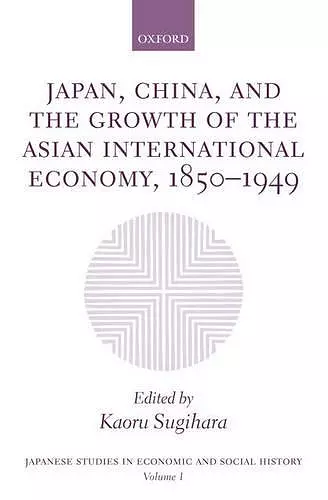Japan, China, and the Growth of the Asian International Economy, 1850-1949
Format:Hardback
Publisher:Oxford University Press
Published:24th Mar '05
Currently unavailable, and unfortunately no date known when it will be back

Modern Asian economic history has often been written in terms of Western impact and Asia's response to it. This volume argues that the growth of intra-regional trade, migration, and capital and money flows was a crucial factor that determined the course of East Asian economic development. Twelve chapters are organized around three main themes. First, economic interactions between Japan and China were important in shaping the pattern of regional industrialization. Neither Japan nor China imported technology and organizations, and attempted to "catch up" with the West alone. Japan's industrialization took place, taking advantage of the Chinese merchant networks in Asia, while the Chinese competition was a critical factor in the Japanese technological and organizational "upgrading" in the interwar period. Second, the pattern of China's integration into the international economy was shaped by the growth of intra-Asian trade, migration, and capital flows and remittances. While the Western impact was largely confined to the littoral region of China, intra-Asian trade was more directly connected with China's internal market. Both the fall of the imperial monetary system and the rise of economic nationalism in the early twentieth century reflected increasing contacts with the Asian international economy. Third, a study of intra-Asian trade and migration helps us understand the nature of colonialism and the international climate of imperialism. In spite of the adverse political environment, East Asian merchant and migration networks exploited economic opportunities, taking advantage of colonial institutional arrangements and even political conflicts. They made a contribution to national and regional economic development in the politically more favourable environment after the Second World War, by providing the valuable expertise and entrepreneurship they had accumulated prewar. The character of the international order of Asia, governed by Western powers, especially Britain, but shared also by Japan for most of the period, was "imperialism of free trade", although it eventually collapsed by the late 1930s.
"...an important corrective to traditional accounts in its clear picture of how and why interactions between East Asian economies shaped the region's economic development." * Economic History Services *
ISBN: 9780198292715
Dimensions: 242mm x 162mm x 23mm
Weight: 617g
312 pages